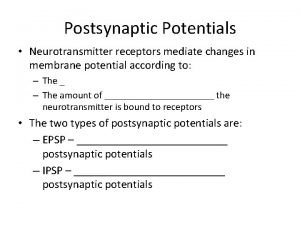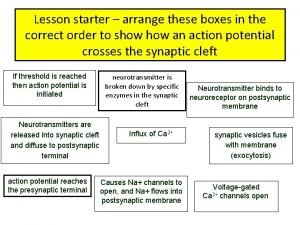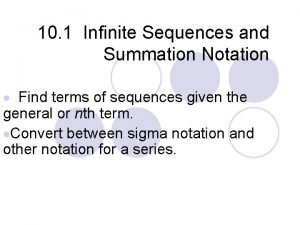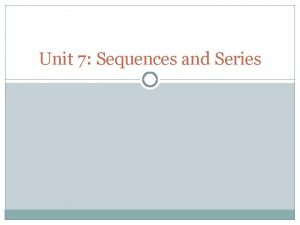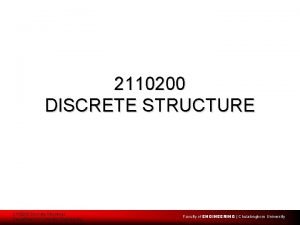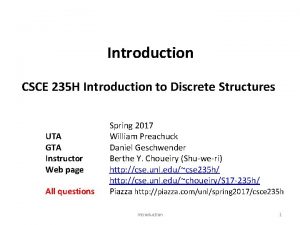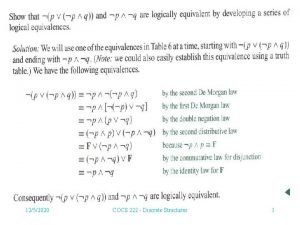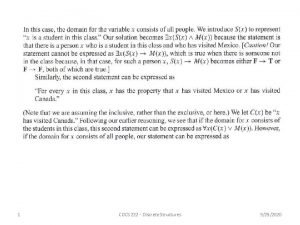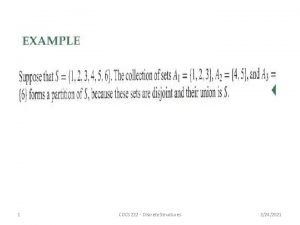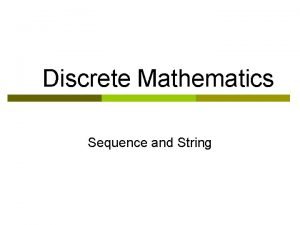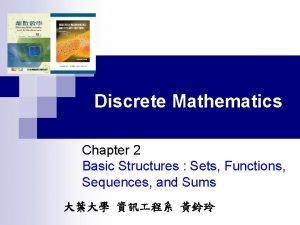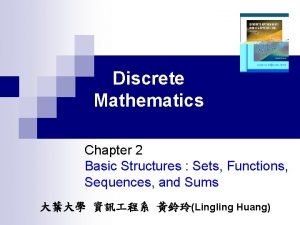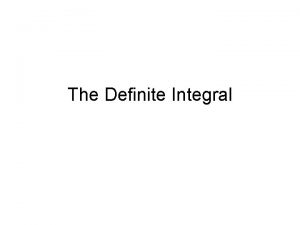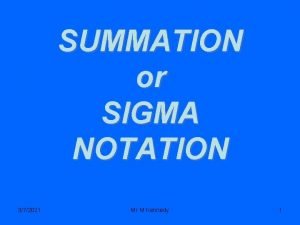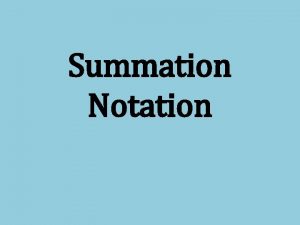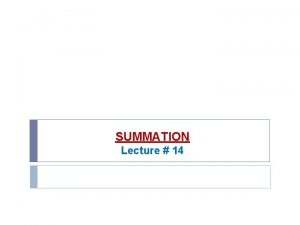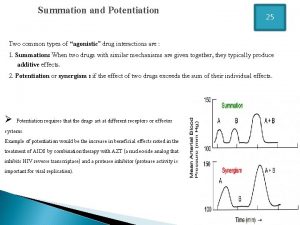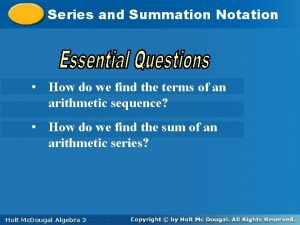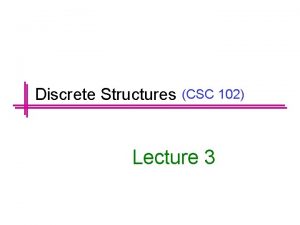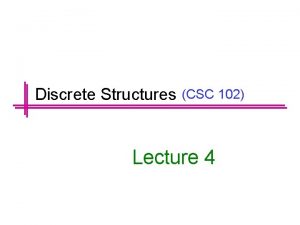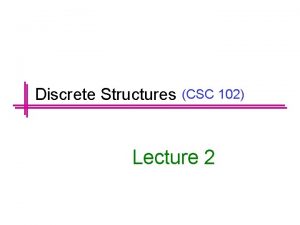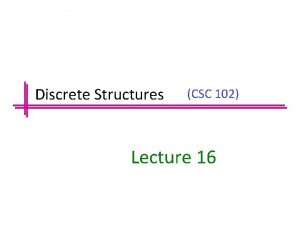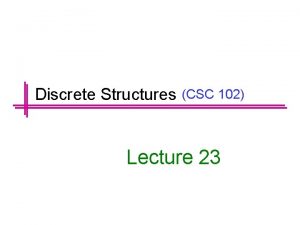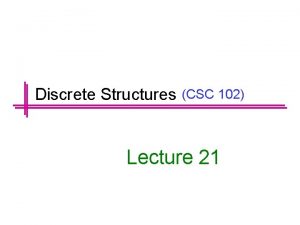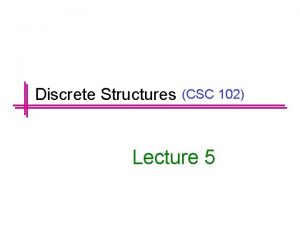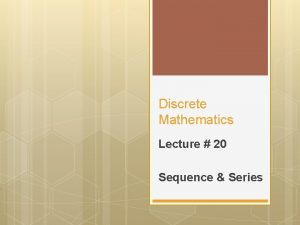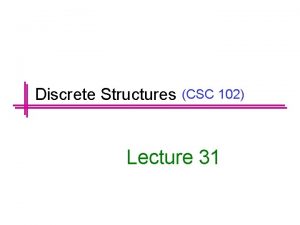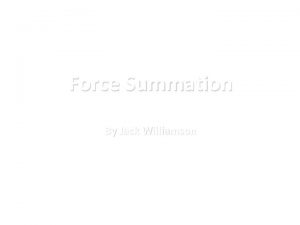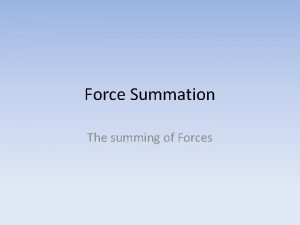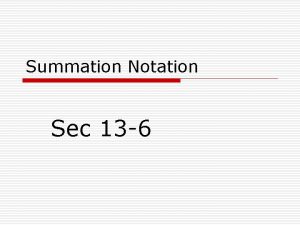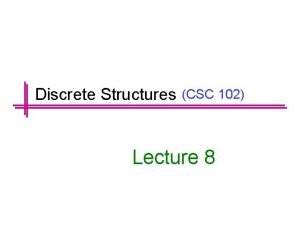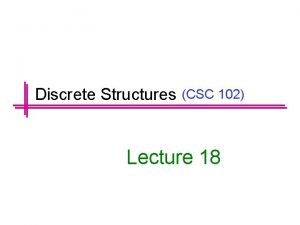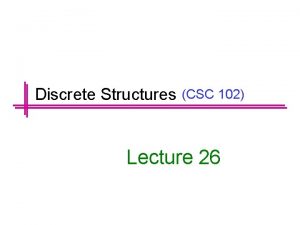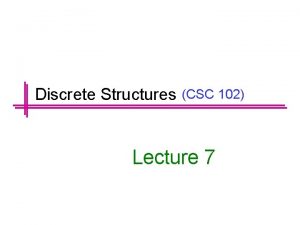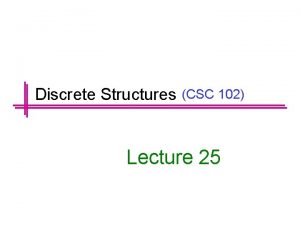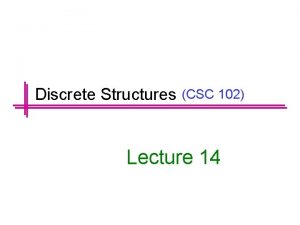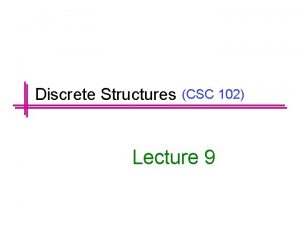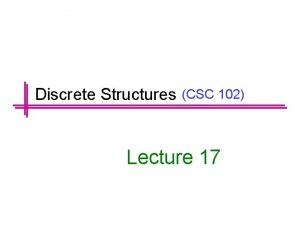Sequence and Summation Discrete Structures CSC 102 Lecture
































- Slides: 32

Sequence and Summation

Discrete Structures (CSC 102) Lecture 22

Today’s Lecture v Sequences v Alternating Sequence v Summation Notation v Product Notation v Properties of Summation v Change of Variable v Factorial Notations

Sequences


Definition A sequence is a function whose domain is either all the integers between two given integers or all the integers greater than or equal to a given integer. We typically represent a sequence as a set of elements written in a row. In the sequence denoted am, am+1, am+2, . . . , an each individual element ak (read “a sub k”) is called a term. The k in ak is called a subscript or index, m.

Finding Terms of Sequences

Alternating Sequence Compute the first six terms of the sequence c 0, c 1, c 2, . . . defined as follows: c j = (− 1) j for all integers j ≥ 0. Thus the first six terms are 1, − 1, 1, − 1. It follows that the sequence oscillates endlessly between 1 and − 1.

Explicit formula Solution: Denote the general term of the sequence by ak and suppose the first term is a 1. Then observe that the denominator of each term is a perfect square. Thus the terms can be rewritten as: Note that the denominator of each term equals the square of the subscript of that term, and that the numerator equals ± 1. Hence

Cont…. Also the numerator oscillates back and forth between +1 and − 1; it is +1 when k is odd and − 1 when k is even. To achieve this oscillation, insert a factor of (− 1)k+1 (or (− 1)k− 1) into the formula for ak. [For when k is odd, k + 1 is even and thus (− 1)k+1 = +1; and when k is even, k + 1 is odd and thus (− 1)k+1 = − 1. ] Consequently, an explicit formula that gives the correct first six terms is Note that making the first term a 0 would have led to the alternative formula

Summation

Cont…

Summation Notation to expanded form

Expanded form to Summation Notation

Cont… A more mathematically precise definition of summation, called a recursive definition, is the following: If m is any integer, then Hence When solving problems, it is often useful to rewrite a summation using the recursive form of the definition, either by separating off the final term of a summation or by adding a final term to a summation.

Separating the terms of Summation

A Telescoping Sum Some sums can be transformed into telescoping sums, which then can be rewritten as a simple expression. For instance, observe that Use this identity to find a simple expression for

Product Notations

Example

Properties of Summation

Example Using Properties

Cont…

Change Of Variable Observe thet And also This equation illustrates the fact that the symbol used to represent the index of a summation can be replaced by any other symbol as long as the replacement is made in each location where the symbol occurs. As a consequence, the index of a summation is called a dummy variable. A dummy variable is a symbol that derives its entire meaning from its local context. Outside of that context (both before and after), the symbol may have another meaning entirely.

Transforming a Sum by a Change of Variable

Upper Limit Appears in the Expression to Be Summed

Cont…

Factorial Notations

Examples

Cont….

Special Factorial Cases

Example

Lecture Summery v Sequences v Alternating Sequence v Summation Notation v Product Notation v Properties of Sequences v Change of Variable v Factorial Notations
 Neuronal pool
Neuronal pool Temporal summation example
Temporal summation example Temporal summation vs spatial summation
Temporal summation vs spatial summation Csc 102
Csc 102 Introduction to arithmetic sequences
Introduction to arithmetic sequences What is distinguishable permutation meaning
What is distinguishable permutation meaning Nth term of ap
Nth term of ap 01:640:244 lecture notes - lecture 15: plat, idah, farad
01:640:244 lecture notes - lecture 15: plat, idah, farad Homologous structures examples
Homologous structures examples Absorption law
Absorption law 2110200
2110200 Discrete math
Discrete math Discrete computational structures
Discrete computational structures Discrete structures
Discrete structures Discrete structures
Discrete structures Discrete structures
Discrete structures Sequences discrete math
Sequences discrete math Sequence discrete math
Sequence discrete math Sequence discrete math
Sequence discrete math Differentiate finite sequence and infinite sequence
Differentiate finite sequence and infinite sequence Which sequence represents structures organized
Which sequence represents structures organized Muscular contraction
Muscular contraction Thermochemistry calorimetry
Thermochemistry calorimetry Nucleotide sequence vs amino acid sequence
Nucleotide sequence vs amino acid sequence Sequence in pseudocode
Sequence in pseudocode Convolutional sequence to sequence learning
Convolutional sequence to sequence learning Definite integral sigma notation
Definite integral sigma notation Summation properties
Summation properties Consider the infinite geometric series
Consider the infinite geometric series Arn 1
Arn 1 Summation of drugs
Summation of drugs Summation formulas
Summation formulas Arithmetic sequence examples
Arithmetic sequence examples
